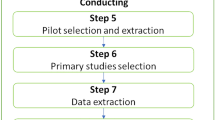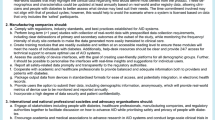Abstract
Considering that infusion devices are safety-critical systems, the main goal of this paper is to evaluate the infusion accuracy and precision of a low-cost insulin infusion pump prototype, using two different methodologies. The first one used a microgravimetric method adapted from IEC60601-2-24, and the second estimated the displacement of the syringe plunger in response to programmed infusions. The low-cost prototype resulted in a compact and functional device with good accuracy. The prototype infused the programmed fluid doses with an average error of 2.2%. The percentage of infusions within ± 5% accuracy was 42.50 and of 84.17% for the ± 15% limit. The developed miniaturized mechanical system presented functionality, precision, and accuracy when coupled to the electronic system, responded well to repeatability tests. Additionally, the results from in vitro tests demonstrated that the performance of the device is satisfactory and comparable to commercial continuous insulin infusion pumps. This study presents a low-cost prototype as a candidate to be used by type 1 diabetic patients in Brazil and developing countries, especially in the context of public health.











Similar content being viewed by others
Notes
aWe defined a constant of 786 steps for infusing 1 IU of insulin in the programming model of the low-cost insulin pump prototype software.
Abbreviations
- ANOVA:
-
Analysis of variance
- DCCT:
-
Diabetes control and complications trial
- DM:
-
Diabetes mellitus
- CSII:
-
Continuous subcutaneous insulin infusion
- IEC:
-
International electrotechnical commission
- IDF:
-
International diabetes federation
- MDD:
-
Multiple daily doses
- SC:
-
Subcutaneous
- T1D:
-
Type 1 diabetes mellitus
References
ABNT, N. IEC 60601-2-24: Requisitos particulares para a segunrança básica e o desempenho essencial de bombas de infusão e de controladores de infusão, 2005.
Balda, C. A., and A. Pacheco-Silva. Artigo de Revisão Aspectos imunológicos do diabetes melito tipo 1. Rev Ass Med Bras. 45:175–180, 1999.
Borot, S., S. Franc, J. Cristante, A. Penfornis, P. Y. Benhamou, B. Guerci, H. Hanaire, E. Renard, Y. Reznik, C. Simon, and G. Charpentier. Accuracy of a new patch pump based on a microelectromechanical system (MEMS) compared to other commercially available insulin pumps: Results of the first in vitro and in vivo studies. J. Diabetes Sci. Technol. 8:1133–1141, 2014.
Bowen, J. L., and C. J. Allender. A comparative pulse accuracy study of two commercially available patch insulin infusion pumps. Eur. Endocrinol. 12:79–84, 2016.
Breton, M. D., and B. P. Kovatchev. Impact of blood glucose self-monitoring errors on glucose variability, risk for hypoglycemia, and average glucose control in type 1 diabetes: An in silico study. J. Diabetes Sci. Technol. 4:562–570, 2010.
Campos-Náñez, E., J. E. Layne, and H. C. Zisser. In silico modeling of minimal effective insulin doses using the UVA/PADOVA type 1 diabetes simulator. J. Diabetes Sci. Technol. 12:376–380, 2018.
Coskun, H., O. Gul, O. Ferhanoglu, and Y. D. Gokdel. Design and implementation of a low-cost high-performance syringe pump system. 2017 21st Natl. Biomed. Eng. Meet. BIYOMUT 2017 1–4, 2018. https://doi.org/10.1109/biyomut.2017.8478979
DeltaLife. Equipamentos Veterinários, Equipamentos Médicos - Delta Life - Tecnologia a serviço da vidaat. https://www.deltalife.com.br/
Freckmann, G., U. Kamecke, D. Waldenmaier, C. Haug, and R. Ziegler. Accuracy of bolus and basal rate delivery of different insulin pump systems. Diabetes Technol. Ther. 21:201–208, 2019.
Girardot, S., F. Mousin, J. Vezinet, P. Jacquemier, S. Hardy, and J. P. Riveline. Kalman filter-based novel methodology to assess insulin pump accuracy. Diabetes Technol. Ther. 21:533–537, 2019.
Gomes, M. B., A. S. De Mattos Matheus, L. E. Calliari, J. L. Luescher, T. Della Manna, R. D. Savoldelli, R. A. Cobas, W. S. Coelho, B. Tschiedel, A. J. Ramos, R. M. Fonseca, N. B. C. Araujo, H. G. Almeida, N. H. Melo, D. L. Jezini, and C. A. Negrato. Economic status and clinical care in young type 1 diabetes patients: A nationwide multicenter study in Brazil. Acta Diabetol. 50:743–752, 2013.
Internation Diabetes Federation. IDF Diabetes Atlas Seventh, 2019.
International Diabetes Federation, I. About diabetes: Type 1 diabetesat https://idf.org/aboutdiabetes/type-1-diabetes.html
Jahn, L. G., J. J. Capurro, and B. L. Levy. Comparative dose accuracy of durable and patch insulin infusion pumps. J. Diabetes Sci. Technol. 7:1011–1020, 2013.
Johnson, S. R., M. N. Cooper, T. W. Jones, and E. A. Davis. Long-term outcome of insulin pump therapy in children with type 1 diabetes assessed in a large population-based case-control study. Diabetologia 56:2392–2400, 2013.
Juarez, A., K. Maynard, E. Skerrett, E. Molyneux, R. Richards-Kortum, Q. Dube, and Z. Maria Oden. AutoSyP: a low-cost, low-power syringe pump for use in low-resource settings. Am. J. Trop. Med. Hyg. 95:964–969, 2016.
Kamecke, U., D. Waldenmaier, C. Haug, R. Ziegler, and G. Freckmann. Establishing methods to determine clinically relevant bolus and basal rate delivery accuracy of insulin pumps. J. Diabetes Sci. Technol. 13:60–67, 2019.
Kovatchev, B. P., S. D. Patek, E. A. Ortiz, and M. D. Breton. Assessing sensor accuracy for non-adjunct use of continuous glucose monitoring. Diabetes Technol. Ther. 17:177–186, 2015.
Martins, L. E. G., and T. Gorschek. Requirements engineering for safety-critical systems: a systematic literature review. Inf. Softw. Technol. 75:71–89, 2016.
Martins, L. E. G., H. de Faria, L. Vecchete, T. Cunha, T. de Oliveira, D. E. Casarini, and J. A. Colucci. Development of a low-cost insulin infusion pump: Lessons learned from an industry case, 2015. https://doi.org/10.1109/cbms.2015.14
Martins, L. E. G., and T. De Oliveira. A case study using a protocol to derive safety functional requirements from fault tree analysis. In 2014 IEEE 22nd Int. Requir. Eng. Conf. RE 2014 - Proc. 412–419, 2014. https://doi.org/10.1109/re.2014.6912292
Medtec. IEC 60601-2-24 Infusion pumps - what’s the story?—MEDTEQ, 2018. https://www.medteq.net/article/2018/9/21/iec-60601-2-24-infusion-pumps-whats-the-story
Medtronic MiniMed, I. MiniMed TM 640G Guia do utilizador do Sistema. 318, 2015.
Nathan, D. M. The diabetes control and complications trial/epidemiology of diabetes interventions and complications study at 30 years: overview. Diabetes Care 37:9–16, 2014.
Paul, P. Clinical management of diabetes in children and adolescents. In: Advanced Nutrition and Dietetics in Diabetes. Chichester: Wiley, 2015, pp. 191–197. https://doi.org/10.1002/9781119121725.ch23
Pleus, S., U. Kamecke, D. Waldenmaier, and G. Freckmann. Reporting insulin pump accuracy: trumpet curves according to IEC 60601-2-24 and beyond. J. Diabetes Sci. Technol. 13:592–596, 2019.
Pollard, D. J., A. Brennan, S. Dixon, N. Waugh, J. Elliott, S. Heller, E. Lee, M. Campbell, H. Basarir, and D. White. Cost-effectiveness of insulin pumps compared with multiple daily injections both provided with structured education for adults with type 1 diabetes: a health economic analysis of the Relative Effectiveness of Pumps over Structured Education (REPOSE) rando. BMJ Open 8:e016766, 2018.
Reichmuth, A., S. Wunderli, M. Weber, and V. R. Meyer. The uncertainty of weighing data obtained with electronic analytical balances. Microchim. Acta 148:133–141, 2004.
Roche Diagnostics, G. Accu-Chek spirit combo. Germany: Mannheim, 2012.
Roze, S., J. Smith-Palmer, W. Valentine, S. Portu, K. Nørgaard, and J. C. Pickup. Cost-effectiveness of continuous subcutaneous insulin infusion versus multiple daily injections of insulin in Type 1 diabetes: a systematic review. Diabet. Med. 32:1415–1424, 2015.
Schaschkow, A., C. Mura, S. Dal, A. Langlois, E. Seyfritz, C. Sookhareea, W. Bietiger, C. Peronet, N. Jeandidier, M. Pinget, S. Sigrist, and E. Maillard. Impact of the type of continuous insulin administration on metabolism in a diabetic rat model. J. Diabetes Res. 2016. https://doi.org/10.1155/2016/8310516.
Simmons, K. M. Type 1 diabetes: a predictable disease. World J. Diabetes 6:380, 2015.
Sociedade Brasileira de Diabetes, S. Diretrizes SBD: Uso da insulina no tratamento do diabetes mellitus tipo 1. 1:80–88, 2015.
Sociedade Brasileira de Diabetes, S. Diretrizes da Sociedade Brasileira de Diabetes 2014-2015. Saf. Sci. 33, 2015.
Sociedade Brasileira de Diabetes, S. Atualização sobre hemoglobina glicada (A1C) para avaliação do controle glicêmico e para o dignóstico do diabetes: Aspectos clínicos e laboratoriais. Posicionamento Of. da SBD, SBPC-ML, SBEM e FENAD 2017/2018 1–36, 2018. https://www.diabetes.org.br/publico/images/banners/posicionamento-3-2.pdf
Svensson, M., J. W. Eriksson, and G. Dahlquist. Early glycemic control, age at onset, and development of microvascular complications in childhood-onset type 1 diabetes: a population-based study in northern Sweden. Diabetes Care 27:955–962, 2004.
Tenório, F., L. Martins, and T. Cunha. Evaluation of a low-cost insulin infusion pump prototype: in vitro preliminary results, 2019. https://doi.org/10.11159/icbes19.128
The Diabetes Control and Complications Trial Research Group, D. The effect of intensive treatment of diabetes on the development and progression of long-term complications in insulin-dependent diabetes mellitus. N. Engl. J. Med. 329:977–986, 1993.
Weissberg-Benchell, J., J. Antisdel-Lomaglio, and R. Seshadri. Insulin pump therapy: a meta-analysis. Diabetes Care 26:1079–1087, 2003.
World Health Organization. Diabetes., 2020. https://www.who.int/health-topics/diabetes
Ziegler, R., D. Waldenmaier, U. Kamecke, J. Mende, C. Haug, and G. Freckmann. Accuracy assessment of bolus and basal rate delivery of different insulin pump systems used in insulin pump therapy of children and adolescents. Pediatr. Diabetes 21:649–656, 2020.
Zisser, H. Insulin pump (dose-to-dose) accuracy: what does it mean and when is it important? J. Diabetes Sci. Technol. 8:1142–1144, 2014.
Zisser, H. C., W. Bevier, E. Dassau, and L. Jovanovic. Siphon effects on continuous subcutaneous insulin infusion pump delivery performance. J. Diabetes Sci. Technol. 4:98–103, 2010.
Zisser, H., M. Breton, E. Dassau, K. Markova, W. Bevier, D. Seborg, and B. Kovatchev. Novel methodology to determine the accuracy of the OmniPod insulin pump: a key component of the artificial pancreas system. J. Diabetes Sci. Technol. 5:1509–1518, 2011.
Acknowledgments
This work was funded by the Coordenação de Aperfeiçoamento de Pessoal de Nível Superior - Brasil (CAPES, Finance Code 001) and FAPESP (2010/511904-9).
Funding
This work was funded by the Coordenação de Aperfeiçoamento de Pessoal de Nível Superior - Brasil (CAPES, Finance Code 001) and Fundação de Amparo à Pesquisa do Estado de São Paulo (FAPESP, Grant Number 2010/511904-9).
Conflict of interest
The authors declare that there is no conflict of interest.
Author information
Authors and Affiliations
Corresponding author
Additional information
Associate Editor Joel Stitzel oversaw the review of this article.
Publisher's Note
Springer Nature remains neutral with regard to jurisdictional claims in published maps and institutional affiliations.
Rights and permissions
About this article
Cite this article
Tenorio, F.S., Martins, L.E.G. & Cunha, T.S. Accuracy of a Low-Cost Continuous Subcutaneous Insulin Infusion Pump Prototype: In Vitro Study Using Combined Methodologies. Ann Biomed Eng 49, 1761–1773 (2021). https://doi.org/10.1007/s10439-020-02721-8
Received:
Accepted:
Published:
Issue Date:
DOI: https://doi.org/10.1007/s10439-020-02721-8




